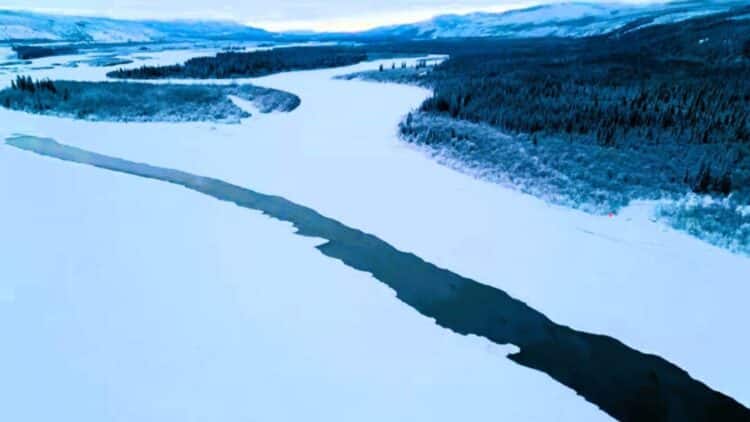Could Alaska be powered by something other than diesel, gas, or oil? It seems as if hidden under Alaska’s frozen river is an energy source, and perhaps this energy source is the steady gush of water that lies beneath. According to the study, Unlocking Alaska’s Water Power Potential (Rogers, K. and Chase-ISrael, J. (2024) published by the National Hydropower Association, the total Alaskan marine energy technical resource potential to be 1,100 TWh/yr”, Alaska’s marine energy resource potential is estimated at 1,100 terawatt-hours (TWh) per year.
What lies beneath the frozen river in Alaska?
This impressive figure represents about 30% of the total electricity that the U.S. consumed in 2023. With new sources of funding and improved technology, Alaska will be able to tap into its vast renewable energy source, all thanks to a hydrokinetic system that has been crafted for these icy conditions.
While often viewed as ice above the surface of water, the most promising site for renewable energy is that of the Yukon River. The potential of the Yukon River increases particularly during the harsher Alaskan winters when the ice locks up traditional energy sources. Researchers from the University of Alaska Fairbanks (UAF) were able to capture images of the ice-covered Yukon closest to the village of Galena, the location that will soon be the source of hydrokinetic testing.
The beautiful part is that beneath the ice is water that continuously moves, offering a large source of untapped potential. The latest project from the UAF’s Alaska Center for Energy and Power (ACEP) that has received $1,5 million in funding from the U.S. Department of Energy (DOE) is set to use off-grid hydrokinetic turbines that can function in the colder weather to tap into the hidden flow beneath the ice as a way to generate energy.
Understanding hydrokinetics and its efficiency under ice
The Reactive Reversible Blade Turbine (RRBT) is a core feature of the device that will be used to extract energy from the slow flow of the water beneath the ice. AECP researchers partnering with Creek Tides Energy and Power and the Southwest Research Institute will first pilot this turbine at the Tanana River Hydrokinetic Test Site in Nenana, Alaska.
Ben Loeffler who is the principal investigator and coordinator of the Pacific Marine Energy Center stated that this initiative allowed for the development of technology meant for working well in frozen rivers in Alaska. These turbines are said to be efficient enough to work beneath the ice’s surface while taking heed of its environmental impact and being concerned about the wildlife in the region.
No chemical substances or any such lubricants are used that could pose a threat to the aquatic environments within these rivers. All DOE environmental protocols have been strictly adhered to in hopes of bringing the Alaskan people electricity all year round from beneath the surface of the ice. Since discoveries of energy being found under the Arctic have already been discussed, we can’t seem to shift our focus away from Alaska, which is the Arctic’s most diverse region.
No more costly diesel for Alaskan communities
There are two parts to the ACEP’s vision. Aside from just utilizing the right hardware, the DOE grant of $500,000 will be used to develop Alaskan talent to spearhead the future of marine energy. Offering internships, hands-on research programs as well as several engineering training programs, the UAF is tapping into local potential too to deploy these renewable systems.
With more effort and support, the idea is to create a self-sustaining clean energy ecosystem throughout rural Alaska. All Alaskan students trained through the various programs can assist communities with the implementation and maintenance of hydrokinetic systems.
This finding of 1,100 TWh/year of untapped water energy potential in Alaska is a significant discovery towards a better future for Alaskans. All credit must be given to generous investments and innovative technologies such as the RRBT. Soon, water flowing beneath the icy surface will become a source of clean and local energy used by Alaskan citizens. While ice loss is still a concern for Alaskans, perhaps energy will no longer be of concern for them.


